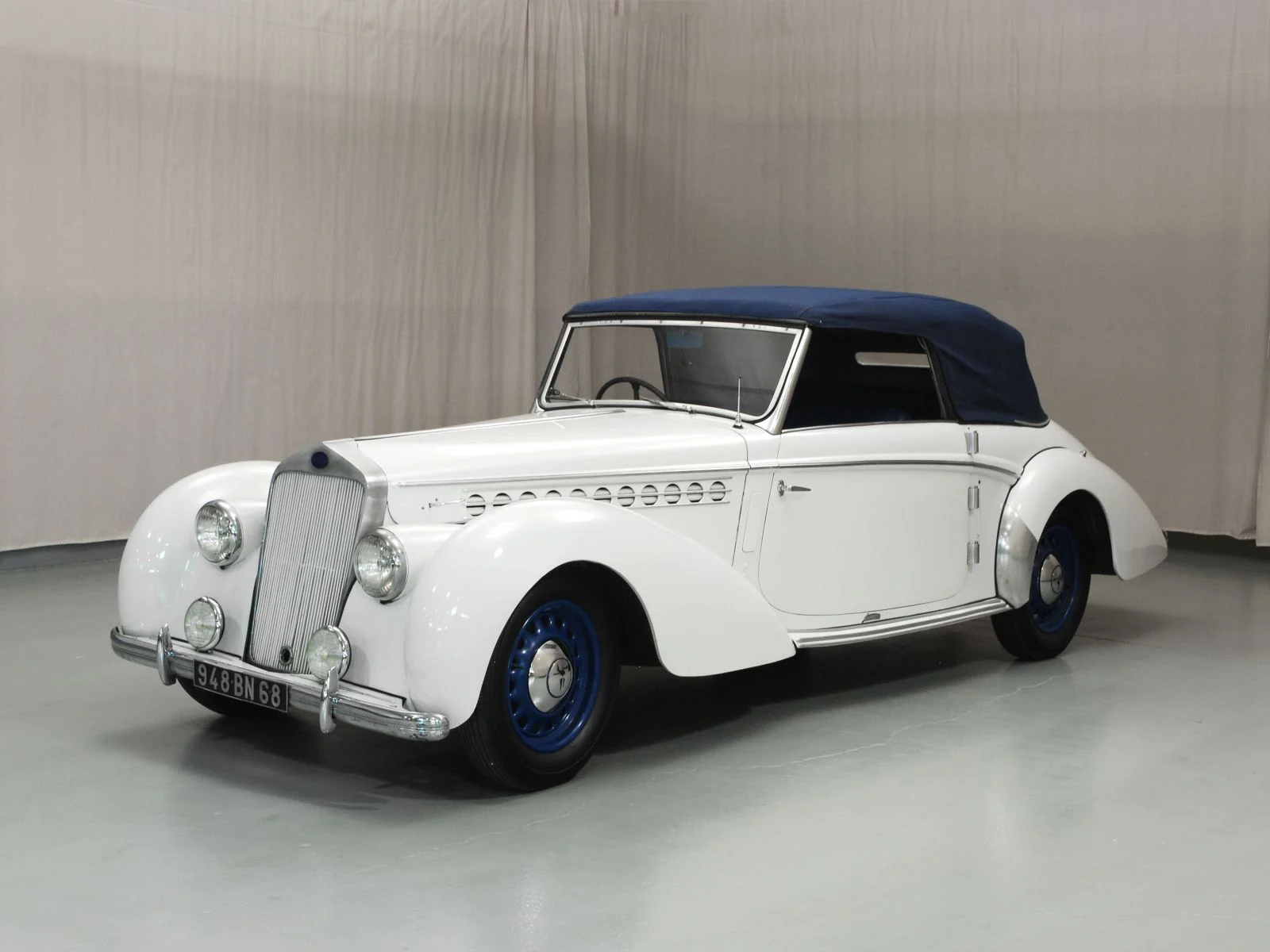

The Delage D6 is a six-cylinder luxury car produced by the manufacturer between 1930 and 1940 and again, after the war, between 1946 and 1953. (The final cars were still receiving their bodies from specialist coach builders and being listed for sale during 1954.) For much of this time it was the company's principal or, from 1946, only model.
The Delage D6 was a popular model, and its longer wheelbase sister, the inline eight-cylinder D8 model, was more so. But both were expensive, and demand was too low to sustain the company.
Rather than declaring bankruptcy, Louis Delage put his company into voluntary receivership, administrated by prominent Delage distributor Walter Watney. Delahaye's managing director Charles Weiffenbach orchestrated an agreement with Watney and Delage, to acquire the assets of the Delage company, and from 1935 onward, Delage D6 and D8 cars were built by Delahaye, alongside its own. The new D8-120 engine was an eight-cylinder version of Delahaye's Type 135, with two added cylinders. Weiffenbach agreed with Watney and Delage, to not build a model to compete with the Delage D8-120. The large displacement Delage was not re-introduced after the war, but the D6-70 continued, in low numbers, until Delahaye ceased to exist at the end of 1954.
The 3045 cc engine of the original D6 placed it in the 17CV car tax band which, for many contemporaries, would also have defined its position in the market hierarchy. During its long production run the car underwent a succession of changes, many of which involved enlargement or modification of the six-cylinder engine. During the 1930s there were, for some of the time, two or three different engines sizes offered. Principal changes and differences in engine sizes were marked by changes and differences as to the suffix at the end of the car's name, generally reflecting differences in fiscal or actual horsepower. For some purposes it can be helpful to think of the D6 as a succession of closely related individual models, but the basic architecture of the chassis and engine did not differ radically between the different versions.
Bodies
Delage took a traditional view of its role as a car producer, and provided cars in bare chassis form to have their bodies fitted by one of the more prestigious bespoke body builders operating (in most cases) in the Paris area which reflected the way that most of France's auto-industry had, from the earliest days, been concentrated on this one region. The D6 therefore appeared, throughout its life, in a wide variety of (frequently) elegant shapes.
The list of coach builders whose bodies were fitted on the Delage D6 reads like a list of France's leading coachbuilders, many of them descended from carriage builders from the pre-motorcar days. Body builders most frequently mentioned in connection with Delage include Letourneur & Marchand and their subsidiary, Autobineau, Henri Chapron, Henri Labourdette, Marius Franay and, especially after the coming together with Delahaye, Alphonse Guilloré.
Chronology
The D6 was introduced in 1930 as a replacement for the Delage DM, but in view of the range of six-cylinder engines with which it was offered it could also be seen as a replacement for the smaller engined Delage DR.
In 1930 the D6 was one in a range of three Delage models on offer. The other two were the slightly lighter (but still six-cylinder powered) DS and, at the top of the range, the very large D8 launched the previous year. All three faced strong economic headwinds in the wake of the 1929 stockmarket crashes.
Delage D6 (1930 – 1933)
The original Delage D6 came with a choice of two chassis lengths, these being 3,149 mm (124.0 in) or 3,289 mm (129.5 in). The 6-cylinder engine had a displacement of 3045 cc. Listed maximum power was 75 hp (56 kW), produced at 3,600 rpm.
By the time production of the original Delage D6 ended, in 1933, 1160 had been produced.